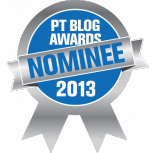
Frankly, I applaud Dr. Irrgang in presenting the NY Times with the current clinical reality of physical therapy. But there was a significant backlash by many physical therapists, including Irrgang’s peers in the American Physical Therapy Association, for his use of the word “voodoo”.
My biggest concern is that if there was a problem with the use of the term, then there is an even bigger issue with the middle-of-the-road response from my peers and my professional association.
APTA President R. Scott Ward noted the following in his response to the article (note: the response is no longer unavailable on their website):
“Somewhere in the middle, I think we can all agree on one thing: evidence is imperative, but it must be combined with the unique clinical knowledge and skills of a physical therapist.”
The use of phrases like “clinical judgment” (aka anecdote) creates too much open space for physical therapists. Far too often, evidence is simply ignored under the auspices of “clinical experience”.
Ward also noted that
“This is true across all health care professions. It must also be noted that the responsibility to practice based on evidence does not fall to our profession alone. Studies have indicated that less than 50 percent of all current health care interventions have evidence to support their use.”
Saying that evidence-based research is a problem that all professions face is simply attempting to rationalize our own status. If we are the self-professed experts of therapeutic exercise, why are we playing a middle-of-the-road stance?
Blech. I hate the middle of the road. If you don’t stand for something, you will fall for anything.
Playing the middle ground isn’t a solution. All it involves is a philosophy of “don’t say anything too strong to offend the _____ [insert here: clinicians, physicians, legislators] yet say it just strong enough to appear as though we’re standing up for (and promoting) our profession”. The APTA continues to take a middle-of-the-road stance - with physical therapists, with other professions, with legislators. And, frankly, it is doing more harm than good.
Are we going to be a profession that is still willing to embrace the lowest common denominator of circa-1950s treatments like hot packs, ultrasound and massage, or are we going to forge ahead with what we know about human function circa 2011? Are we going to turn a blind eye to clinicians utilizing the lowest common denominator, or are we going to stand up and make a commitment to truly being the experts of therapeutic exercise prescription and progression?
We have to speak strongly and clearly within our profession, and we need to do the same for all stakeholders involved – legislators and consumers alike. We don’t need a middle-of-the-road mentality when we have the potential to be the leaders in health mentorship.
We need a makeover. Check back for upcoming articles on how we can do this.
Photo credits: Wikipedia

 "Running Injuries: Etiology And Recovery- Based Treatment" (co-author Bridget Clark, PT) appears in the third edition and fourth editions of "Clinical Orthopaedic Rehabilitation: A Team Approach" by Charles Giangarra, MD and Robert C. Manske, PT.
"Running Injuries: Etiology And Recovery- Based Treatment" (co-author Bridget Clark, PT) appears in the third edition and fourth editions of "Clinical Orthopaedic Rehabilitation: A Team Approach" by Charles Giangarra, MD and Robert C. Manske, PT.
 Allan Besselink, PT, DPT, Ph.D., Dip.MDT has a unique voice in the world of sports, education, and health care. Read more about Allan here.
Allan Besselink, PT, DPT, Ph.D., Dip.MDT has a unique voice in the world of sports, education, and health care. Read more about Allan here.
 Top 5 finalist in three categories: "Best Overall Blog", "Best PT Blog" and "Best Advocacy Blog".
Top 5 finalist in three categories: "Best Overall Blog", "Best PT Blog" and "Best Advocacy Blog".